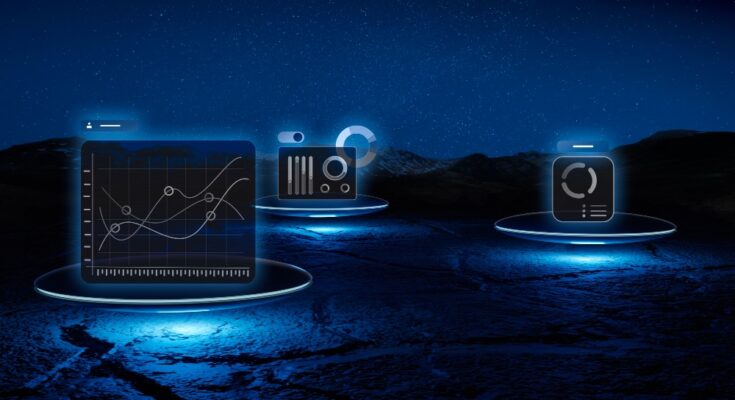
INTRODUCTION
The Internet of Things (IoT) transformed industry data collection processes, data analysis, and action methods. When combined with IoT, Tableau Pulse provides organisations with immediate data-driven decision modules through real-time business intelligence capabilities. This blog tableau consulting company shows how Tableau Pulse combines IoT data to generate a strong system for operational monitoring alongside alerting and analytics capabilities.
The Rise of IoT in BI
The connections between IoT devices, including sensors, machines and wearables, have changed industries by delivering real-time information. IoT has changed business intelligence practises by shifting their dependency from static data to real-time streaming information.This paradigm shift empowers businesses with the following:
- Real-Time Monitoring: Asset and operational monitoring happen in real-time.
- Predictive Analytics: Live analytical data allows organisations to predict system breakdowns in advance.
- Enhanced Decision-Making: Providing actionable insights quickly.
The linkage of IoT data with Tableau Pulse BI platforms represents a milestone which connects unprocessed data with actionable intelligence.
How Tableau Pulse Works with IoT Data
Tableau Pulse complements Tableau’s analytics tools through real-time performance tracking, which generates automated alerts. Here’s how it integrates seamlessly with IoT data:
- Connecting IoT Data Sources: Tableau Pulse uses AWS IoT, Azure IoT Hub, MQTT brokers, and custom MQTT brokers to intake real-time datasets.
- Data Preparation: The Prep Builder from Tableau helps transform IoT data to prepare it for effective visualisation and analysis needs.
- Real-Time Alerts: The Pulse system sends notifications through multiple platforms, including email and Slack, when key performance indicators exceed predetermined limits.
- Integration with BI Dashboards: The system sends data directly to Tableau dashboards so stakeholders can view real-time visualised data and updates.
Through Tableau Pulse, organisations achieve centralised IoT data management, providing their decision-makers with updated insights.
Building Real-Time Dashboards for IoT Insights
Structural methodology must be implemented to create dashboards that analyse IoT data. Here’s a step-by-step guide:
- Define Key Metrics: Your business must focus on identifying IoT data points such as temperature, pressure, and device uptime, which matter most.
- Ingest Real-Time Data: Your Tableau environment benefits from live IoT steam integration through Tableau Pulse.
- Design Interactive Visuals: Integrating localised heatmaps, time-based line charts, and performance indicators represents a real-time system dial.
- Set Alerts: Tableau Pulse enables users to customise alert systems that trigger notifications for statistical abnormalities or measured threshold violations.
- Test and Iterate: Testing your dashboards through regular real-time data applications helps validate your work’s accuracy and usability.
The successful IoT dashboard engages users with tableau data visualization presentation that enables them to follow data-driven guidance toward specific actionable insights.
Detecting Anomalies in IoT Data with Pulse
Operation efficiency depends on anomaly detection for IoT devices because they produce huge data. Tableau Pulse offers:
- Threshold-Based Alerts: The system should enable users to establish detection parameters for acceptable data domains which can detect anomalies.
- Machine Learning Integration: The combination of Machine Learning models and Pair Pulse can automatically identify operational patterns, which help predict system failures.
- Real-Time Notifications: The system alerts users whenever anomalies surface, including temperature spikes or unanticipated system stoppages.
Technological interventions deployed proactively minimise equity time while improving device functioning and preventing expensive equipment failures.
Maximising ROI with IoT-Driven BI
Integrating Tableau Pulse technology with IoT data leads to remarkable increases in business ROI performance. Here’s how:
- Operational Efficiency: Timely insight capabilities let organisations make prompt problem-solving adjustments that reduce inefficiency and waste.
- Cost Savings: Pressing alerts based on prediction functionality prevents companies from spending significant funds on equipment malfunctions.
- Improved Customer Experience: Companies adjust their response to customer requirements at the speed of their current data stream.
- Strategic Decision-Making: Companies gain complete operational visibility through ongoing tracking, which helps them build strategies across multiple time horizons.
Business decision-making becomes possible because enterprises leverage their IoT investments with these benefits.
Challenges & Best Practices in IoT BI
While IoT-driven BI offers immense potential, there are challenges to consider:
Common Challenges:
- Data Overload: The massive amount of IoT data poses difficulties during management.
- Integration Complexity: A challenge is establishing functional compatibility between Tableau Pulse and various IoT platforms.
- Latency Issues: System resources may experience performance limitations because of real-time processing demands.
Best Practices:
- Prioritise Data: Select the most important metrics which serve your business goals.
- Invest in Scalable Infrastructure: Cloud-based systems manage evolving data volumes for your needs.
- Ensure Data Quality: Periodic cleaning procedures and data validation must be performed on your IoT information.
- Leverage Automation: Your team can reduce manual work through Tableau Pulse automation tools.
These best practices create conditions for the successful and convenient execution of IoT BI initiatives.
FAQ
- What is Tableau Pulse, and how does it work with IoT data? Tableau Pulse is a real-time monitoring platform that links to IoT infrastructure for immediate stream data analysis to generate visualisations that enable rapid decision support.
- Can Tableau Pulse handle large volumes of IoT data? Yes, The tool handles IoT data streams at high velocity because it connects to platforms like AWS IoT and Azure IoT Hub for scalability.
- What types of IoT devices can be connected to Tableau Pulse? IoT devices connected to Tableau Pulse must stream data through platforms using supported protocols such as MQTT, REST APIs, and cloud IoT services.
- How does Tableau Pulse help detect anomalies in IoT data? Real-time failure predictions and outlier identification functions through threshold-based alerts operate alongside machine learning models.
- What are the benefits of using Tableau Pulse for IoT data analytics?
Through interactive dashboard presentation features, the system provides instant analytics with predictive warnings, enhanced operational effectiveness, dietary savings, and better decision-making capabilities.
Conclusion
Integrating Tableau Pulse with IoT data gives businesses an essential tool for accessing actual-time insights. IoT-driven BI organisations gain better operational efficiency and cost reduction while making more informed decisions. Tableau Pulse serves business operations through its ability to create interactive dashboards while spotting anomalies and enabling maximum return on investment and full IoT ecosystem utilisation.The evolution of IoT brings increasingly important requirements for real-time BI platforms, so Tableau Pulse demonstrates its importance as an essential tool for contemporary businesses.






